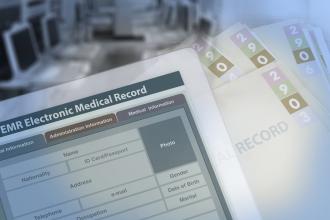Does telemedicine need stricter rules for engagement?
Until recently, with very few exceptions, MSP fee compensation for a patient service was contingent on a face-to-face patient visit, regardless of whether the visit was an efficient use of time for the patient or physician. Times have evolved and MSP will now compensate physicians for limited patient services delivered by telephone. In addition, it is possible to receive MSP compensation for virtual visits via telemedicine.
Telemedicine goes a step beyond the telephone—it is a combination of telecommunication and information technology, in varying degrees of sophistication, which allows for real-time voice and visual communication between the parties involved. At its most straightforward it involves contact through a service such as Skype or FaceTime, which should be compliant with the CMPA’s legal advice and the College’s standards regarding privacy and security. A more sophisticated type of real-time telemedicine captures vital signs and oxygen saturation and uses instruments such as otoscopes, ophthalmoscopes, and electrocardiography monitors. Some of these instruments provide a magnified image with clarity that is better than in real life. Telemedicine technology may one day be able to transmit tactile response, making the virtual visit almost indistinguishable from a face-to-face visit; however, only the real-life visit will convey the personal interaction so valuable as a therapeutic tool and in the creation of a good physician-patient relationship.
The biggest challenges facing telemedicine today are not the gaps in technology but how telemedicine is applied. If telemedicine is allowed to flourish as a new form of medicine rather than as a tool that a physician chooses to optimize patient encounters, the risk is that it will become an industry in itself and lead to tele-walk-in clinics and prescription-refilling services. And depending on how remunerative it is, it could potentially draw physicians away from clinic or hospital-based work. Should we not learn from the example of walk-in clinics eroding the traditional primary care home?
In some circumstances telemedicine can provide a valuable medical service to communities with scarce physician resources, despite its diagnostic and treatment limitations. However, the question remains: How should telemedicine evolve in urban settings and how should it be funded? In my opinion, it is up to the primary care physician to determine how best to provide care in specific circumstances, be it face-to-face, by telephone, by telemedicine, or by e-mail. Telemedicine has tremendous potential value in enhancing comprehensive longitudinal care and should not result in more fragmented care. The implementation of this technology deserves a sophisticated utilization strategy. As for public funding, would it not be best for physician remuneration to be based on comprehensive patient care rather than on the modality used to service patients?
—WRV

